Endeavor Research Private Ltd successfully hosted the Webinar on Nanotechnology during October 21-22, 2020. The webinar was successful in gathering 45 eminent speakers from various reputed organizations and their paramount talks enlightened the gathering.
The pragmatic meet organized by Endeavor Research Private Ltd received generous response from Industrialists, Academia, Talented Researchers and Young Student Community. Industrialists, Researchers and Students who attended from different parts of the world made the webinar one of the most successful events from the Endeavor.
The scientific program paves a way to gather visionaries through the research talks and presentations and put forward many thought provoking strategies.
Scientific sessions covered in the webinar i.e. Nanomaterials | Nanomedicine and Nano Drug Delivery Systems | Nanocomposites and Nanofluids | Molecular Nanotechnology | Nanotechnology in Medical Diagnosis | Nano-optics, Nanophotonics and Nanoplasmonics | Nanomaterials for Energy and Environmental Applications | Nanomaterials Characterizations and Devices | Nanodevices, Nanoelectronics and Nanosensors| Advanced Nanomaterials- production, synthesis and processing | Organic and Inorganic Nanomaterials | Nanofabrication, Nanoprocessing & Nanomanufacturing | Biomaterials & Nanobiotechnology | Nuclear Nanotechnology | Graphene and Applications of 2D Materials | Nano Materials Synthesis, 2D & 3D Characterization and Applications.
The webinar was marked with the presence of renowned Speakers, Young Researchers, Students and Business Delegates driving the two day event into the path of success with thought provoking keynote and oral presentations.
Advisory Board Member
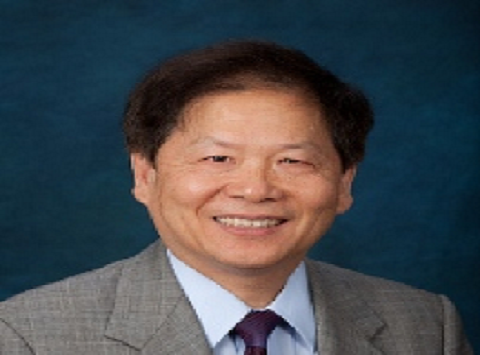
Peixuan Guo
Director of Center for RNA Nanobiotechnology and Nanomedicine, The Ohio State University - USA
Dr. Peixuan Guo is the first to prove the concept of RNA nanotechnology, has held three Endowed Chair Professor positions at three prestigious universities including the College of Pharmacy at the University of Kentucky; and the College of Pharmacy at The Ohio State University (OSU)., and a Distinguished Faculty Scholar of Purdue. Currently he is Sylvan G. Frank Endowed Chair Professor in Pharmaceutics and Drug Delivery; the director of the Center of RNA Nanobiotech and Nanomedicine at OSU; the president of the International Society of RNA Nanotechnology and Nanomedicine (ISRNN). He is also the Chairman of the Board of Directors for ExonanoRNA LLC, and Foshan Weina Biomedicine Inc both focusing on the development of RNA therapeutics for cancers using the RNA Nanotechnology he invented and leads internationally. He received his Ph.D. in Microbiology and Genetics from University of Minnesota, then postdoctoral training at NIH under Bernard Moss, a member of the National Academy of Science. He was an Assistant Professor of molecular virology at Purdue in 1990, tenured in 1993, became full Professor in 1997 and was honored as a Purdue Distinguished Faculty Scholar in 1998. He was the Director of NIH Nanomedicine Development Center from 2006-2011 and the director of NCI Cancer Nanotechnology Platform Partnership Program on RNA Nanotechnology for Cancer Therapy from 2012-2017. As earlier as 1987 he envisioned that cells have many small RNA molecules with novel functions undiscovered, and named them “sRNA” (Guo et al. A small viral RNA is required for in vitro packaging of bacteriophage phi29 DNA. Science 1987; 236:690). He also constructed the first viral DNA packaging motor (PNAS 1986); first one to reported that viral DNA packaging is driven by ATPase, and identified the protein sequence for ATP binding (JBC 1986) that is the same sequence motif that 8 years later James Walker received his Novel Price in 1995; determined that one ATP is used to package two bp of dsDNA (JBC 1986); revealed pRNA hexamer (Mol Cell 1998) that has led to the emergence of the field of RNA Nanotech; pioneered RNA nanotechnology (Mol Cell 1998, featured in Cell; and 4 papers in Nature Nanotech 2010,2011,2018); developed a TIRF Photobleaching dual imaging System to count single-fluorophores (EMBOJ 2007); incorporated phi29 motor channel into membrane (Nature Nanotech 2009) for single pore sensing and RNA and peptide sequencing (licensed to Oxford Nanopore); discovered a third class of biomotor using revolution mechanism; developed approaches for ultra-potent drug development. He was honored for Pfizer Distinguished Faculty Award; Purdue Faculty Scholar Award; Lions Club Cancer Res Award; Distinguished Alumni of U of Minnesota; 100 Years Distinguished Chinese Alumni of U of Minnesota. He has been editor or on the editorial board of 7 nanotech journals including the Executive Deputy Editor of Molecular Therapy/Nucleic Acids and the co-founder of Nanomedicine BMN. He was reported numerous times by TV or media such as ABC, NBC, ACS; featured by NIH, NSF, MSNBC, NCI and ScienceNow as well as by NIH director Francis Collins’ office. He has been the organizer or founding chair of 8 international conferences and GRC conferences on RNA Nanotechnology; and was previously a member of two prominent national nanotech initiatives by NSF, NIH, National Council of Nanotechnology and NIST, as well as the member of two NIH steering committees in nanotechnology.
Happiness is a personal feeling. The happiness of a hard-working scientist is the exploration of the unknown word that can resulted in self-rewarding and self-comfort. As earlier as 1987, I found that besides the mRNA, tRNA, rRNA, and ribozyme that have been already known at that time, cells had many small RNA (sRNA) molecules with novel functions yet undiscovered (Guo et al. A small viral RNA is required for in vitro packaging of bacteriophage phi29 DNA. Science 1987; 236:690). In 1998, I proved the concept of RNA nanotechnology (Guo et al, Mol Cell, 1998, featured in Cell; 4 papers in Nature Nanotech 2010, 2011, 2018). We proved that RNA nanoparticles can be used for cancer therapy (Guo lab in Human Gene Therapy, 2005, Nano Letters 2005, Gene Therapy 2006). In 2014, I predicted that a third milestone in the history of pharmaceutical drug development will be RNA as drugs or drugs that dock to (Shu, et al, and Guo, Adv Drug Delivery Reviews, 2014; 2014; 66:74). The recent approval of several RNA based drugs by the FDA demonstrates that the third milestone is coming.
RNA nanotechnology is the construction of nano-architectures by bottom-up self-assembly with a scaffold, ligands, therapeutics, and regulators, comprised mainly or exclusively of RNA. A variety of programmable stable RNA nanoparticles with defined shape, size, and stoichiometry have been developed for diverse applications. RNA nanoparticles can self-assemble into a homogeneous structure with defined stoichiometry. These nanoparticles with 2’- modifications are thermodynamically and chemically stable, non-toxic, and highly soluble; display favorable biodistribution and PK/PD profiles; and retain authentic folding and independent functionalities of all incorporated modules (ie. RNA aptamer, siRNA, miRNA or ribozyme). During the last several years, the three major challenges became resolved concerning RNase degradation, in vivo dissociation, and immune responses. The rising popularity of RNA nanotechnology is mainly due to the following achievements: (1) introducing chemical modifications into nucleotides without significantly altering the RNA folding or self-assembly; (2) confirming the concept that RNA structures have very high thermodynamic stability and is suitable for in vivo circulation and other applications; (3) developing methods to control shape, size, and stoichiometry of RNA nanoparticles; (4) proving that the immunogenicity of RNA nanoparticles is size, shape, structure and sequence dependent and is tunable to produce either a minimal immune response that can serve as safe therapeutic vectors, or a strong immune response for cancer immunotherapy or vaccine adjuvants; (5) decreasing cost of RNA production by chemical synthesis; (6) demonstrating the production of safe and specific targeting therapeutic RNA nanoparticles for cancer and other diseases with little or no accumulation in vital organs.
Advisory Board Member

Orlando Auciello
Materials Science and Engineering and Bioengineering, University of Texas at Dallas/Distinguished Endowed Chair Professor, Richardson, Texas, USA
Auciello MS (1973), PhD (1976) degrees in Physics, Institute “Dr. Balseiro” (Universidad de Cuyo-Argentina). EE-Universidad de Córdoba-Argentina (1970). Researcher- Toronto University-Canada (1979-84), Professor-NCSU-USA (1985-1988); Scientist-MCNC-USA (1988-96), Argonne Laboratory Fellow (1996-2012)-USA. Auciello Distinguished Chair-UTD. Auciello is directing R&D on multifunctional oxide/ UNCD films and applications to high-tech/medical devices. UNCD film technology commercialized in industrial products by ADT, and medical devices by OBI-USA)/OBI-México, founded by Auciello/colleagues. Auciello edited 30 books, published 550 articles, holds 30 patents, He was associate editor of APL and other journals, He was President of the MRS (2013); he is AAAS and MRS Fellow, has many Awards .This talk will discuss the science and technology of the new paradigm material named ultrananocrystalline diamond (UNCDTM) in film form and integration into new generation of external and implantable medical devices, described below: UNCD films, developed/patented by Auciello and colleagues, are grown on many substrates by novel MPCVD and HFCVD technique, using Ar/CH4 chemistry, producing films with 2-5 nm grains. The UNCD films exhibit the lowest friction coefficient (0.02-0.04) compared with metals (≥ 0.5) currently used in many prostheses (e.g., hips, knees), electrically conductive Nitrogen-doped N-UNCD coatings enable a new generation of corrosion resistant electrodes, UNCD coatings are the best biocompatible material, made of C atoms (element of life in the human DNA, cells, and molecules). OBI-USA/OBI-México are developing new generations of external and implantable medical devices based on UNCD coatings, namely: a) UNCD-coated silicon-microchip implantable inside the eye as key component of artificial retina, returning partial vision to people blind by genetically-induced degeneration of photoreceptors (Argus II device marketed by Second Sight in Europe and USA); b) new generation of Li-ion batteries with ≥ 10x longer life and safer, using UNCD-coated electrodes, membranes and inner wall battery case, enabling ≥ 15-20 years defibrillator/pacemakers and cell phones charged every 2-3 days; c) new generation of implantable prostheses (e.g., dental implants, hips, knees) coated with UNCD eliminates failure of current metal-implants due to mechanical wear / chemical corrosion by body fluids; d) N-UNCD-coated polymer with brain neurons tailored stiffness enables less invasive neural stimulation electrodes; e) UNCD-coated masks for trapping more efficiently COVID-19 virus, due to ≤ 20 nm pores vs micron size pores in current masks; f) Electrically conductive/water corrosion resistant Boron-doped UNCD-coated metal electrodes for water purification and cleaning of mask via generation of ozone, killing all virus, bacteria, and every pathogen on surfaces.
This talk will discuss the science and technology of the new paradigm material named ultrananocrystalline diamond (UNCDTM) in film form and integration into new generation of external and implantable medical devices, described below: UNCD films, developed/patented by Auciello and colleagues, are grown on many substrates by novel MPCVD and HFCVD technique, using Ar/CH4 chemistry, producing films with 2-5 nm grains. The UNCD films exhibit the lowest friction coefficient (0.02-0.04) compared with metals (≥ 0.5) currently used in many prostheses (e.g., hips, knees), electrically conductive Nitrogen-doped N-UNCD coatings enable a new generation of corrosion resistant electrodes, UNCD coatings are the best biocompatible material, made of C atoms (element of life in the human DNA, cells, and molecules). OBI-USA/OBI-México are developing new generations of external and implantable medical devices based on UNCD coatings, namely: a) UNCD-coated silicon-microchip implantable inside the eye as key component of artificial retina, returning partial vision to people blind by genetically-induced degeneration of photoreceptors (Argus II device marketed by Second Sight in Europe and USA); b) new generation of Li-ion batteries with ≥ 10x longer life and safer, using UNCD-coated electrodes, membranes and inner wall battery case, enabling ≥ 15-20 years defibrillator/pacemakers and cell phones charged every 2-3 days; c) new generation of implantable prostheses (e.g., dental implants, hips, knees) coated with UNCD eliminates failure of current metal-implants due to mechanical wear / chemical corrosion by body fluids; d) N-UNCD-coated polymer with brain neurons tailored stiffness enables less invasive neural stimulation electrodes; e) UNCD-coated masks for trapping more efficiently COVID-19 virus, due to ≤ 20 nm pores vs micron size pores in current masks; f) Electrically conductive/water corrosion resistant Boron-doped UNCD-coated metal electrodes for water purification and cleaning of mask via generation of ozone, killing all virus, bacteria, and every pathogen on surfaces.
Advisory Board Member
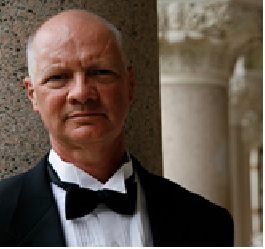
Kenton H. Whitmire
Department of Chemistry, Rice University - USA
Professor Whitmire received his BS in chemistry from Roanoke College and his MS and PhD degrees in inorganic chemistry from Northwestern University. He arrived at Rice University in 1982 after completing a NATO Postdoctoral Fellowship at Cambridge University, UK. He has also been a recipient of an Alexander von Humboldt Research Fellowship and has been a visiting professor at the Université de Rennes (Rennes, France) and Korea University (Seoul, South Korea). He recieved the Joe W. Hightower Award from the Greater Houston Section of the American Chemical Society in 2019. His research program has focused on organometallic and inorganic coordination chemistry and he has published more than 230 papers. His recent work has explored the synthesis of metal phosphide nanoparticles and thin films from main group element-transition metal carbonyl clusters and their application in water splitting catalysis.
Transition metal carbonyl clusters that also contain main group elements or organo-main group element fragments afford a unique opportunity as single-source precursors for transition metal-main group element solid state compounds. Their wide range of structures and stoichiometries allow for the production of a wide range of stoichiometries and phases. This talk will focus on the use of Fe(CO)4(PH3), Fe(CO)4(PH2tBu), [P(H)(tBu){Fe(CO)4}]2, H2Fe3(CO)9(m3-PtBu) and FeMn(CO)8(m-PH2) as precursors to FeP, Fe2P, Fe3P and FeMnP and their subsequent use as water splitting electrocatalysts (both the hydrogen evolution reaction, HER, and oxygen evolution reaction, OER) on a variety of substrates including SiO2, Al2O3, FTO, TiO2, nickel foam (NF) and carbon nanotube functionalized nickel foam. This methodology also allows for preparing doped materials via co-decomposition of the single-source precursors with isostructural analogues containing other transition metals or main group elements
Keynote Speaker

Keynote Speaker
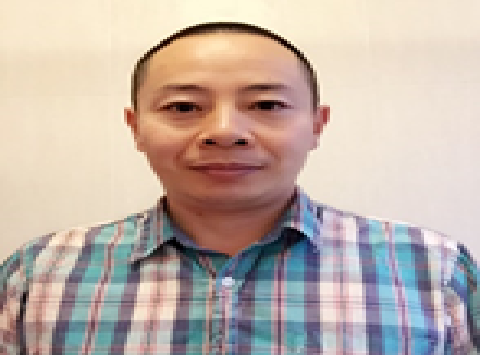
Haixue Yan
School of Engineering and Materials Science, Queen Mary University of London - UK
Dr Haixue Yan received his Ph.D. in Materials Science and Technology from Shanghai Institute of Ceramics, Chinese Academy of Sciences in 2001. He is a Senior Lecturer in functional materials at Queen Mary University of London (QMUL). High temperature ferroelectrics, lead-free piezoelectric, energy materials and Spark Plasma Sintering are important topics of current fundamental research and industrial applications. His research includes these topics with textured, nano- and metastable structures. He has 168 publications (including Adv Mater, Adv Energy Materials, Nano Energy, JMCA/JMCC, ACS Nano, Acta Mater and Nature Comm) with H-index=41. He has been serving as an editorial board member of Advance in Applied Ceramics, Journal of Advanced Ceramics and Materials Research Bulletin
Due to the worldwide concerns of environmental protection and sustainable development, lead-free piezoelectric materials are greatly desired for bridging the electrical energy to the mechanical energy. However, their lower energy conversion coefficient compared to the conventional lead-containing piezoelectric materials significantly limits their device applications. Herein, we introduce a novel strategy to increase the strain of lead-free ferroelectric system via material structure design to create polar nano regions (PNRs) and point defects in the material while retaining the global ferroelectric phase. This added short-range structural heterogeneity in the material will facilitate the field-induced phase transition and reversible domain wall switching to enhance the strain. Following this strategy, we demonstrate an ultrahigh strain induced by an electric field in non-textured lead-free Bi0.5Na0.5TiO3 (BNT)-based ceramics. The strain in unipolar mode can reach up to 0.74% at 70 kV/cm, making it the highest value in reported lead-free ceramics so far. This puts forward a good route to design high-performance piezoelectric materials by material structure engineering. It also reveals the promising potential of lead-free piezoelectric materials in practical electromechanical device applications.
Keynote Speaker

Wonbong Choi
Nanomaterials and Devices Lab, MRS Fellow, University of North Texas, USA
Dr. Choi is a professor at the Department of Materials Science and Engineering and Mechanical and Energy Engineering Department at University of North Texas. He joined the UNT in 2012 after his work in Florida International University as a tenured full professor and senior researcher at SAMSUNG. He obtained his Ph.D from the North Carolina State University (NCSU) in 1997. Dr. Choi was awarded the Materials Research Society (MRS) Medal for 2006 “for important developments in the materials science and applications of carbon nanotubes”. He received MRS Fellow as the youngest person named as a Fellow in 2009. He is the author/co-author of over 80 patents, 1 book (“GRAPHENE” CRC Press 2011), 10 book chapters, over 250 publications, which includes 150 peer-reviewed journal articles and 80 conference proceedings. His research articles have been cited ~15,000 times with H-index of 62 (Google Scholar).
One of the key bottlenecks of nanotechnology is the inability to translate the amazing properties of individual nanostructures to larger scales due to the inability to engineer them with control. Recent advances in atomically thin two-dimensional (2D) materials have led to a variety of promising technologies for nanoelectronics, energy storage, and opto-electronics, to name a few. Albeit several challenges in developing scalable and defect-free transition metal dichalcogenides (TMDs) on desired substrates, new growth techniques compatible with traditional and unconventional substrates have been developed to meet the ever-increasing demand of high quality and controllability for practical applications. This talk will present two subjects, synthesis of tunable large scale 2D TMDs and their characterization, and engineering of 2D TMDs for electronics. In addition, our recent research of 2D TMDs enabled high efficiency Li-S batteries will be presented. Our approach can lead to the realization of high energy density, suppression of polysulfides shuttle effect, and safe Li-metal based batteries.
Keynote Speaker
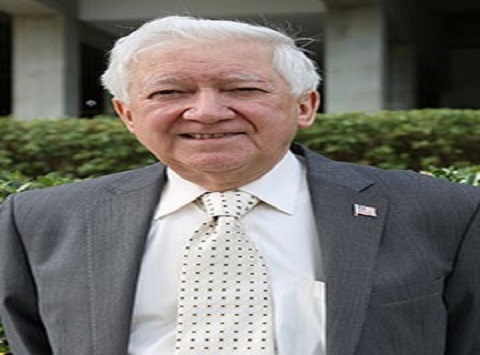
Roger M. Leblanc
University of Miami, USA
Dr. Roger M. Leblanc received his B. S. in chemistry in 1964 from Université Laval, Canada, and Ph. D. in physical chemistry in1968 from the same university. He was appointed as professor in 1994 and chair of Department of Chemistry at University of Miami from 1994 to 2002 and again from 2013 to present. He was also one of the three editors of Colloids and Surfaces B: Biointerfaces from 1998 to 2013. He has published 520 scientific articles in peer-reviewed journals. As a professor, he has supervised more than 100 M.S. and Ph.D. students.
Carbon dots (CDs) with size less than 10 nm have recently triggered great attention in the research of material science and biomedical engineering due to their unique properties such as small size, excellent photoluminescence (PL), high water-dispersity, biocompatibility, nontoxicity and abundant surface functionalities. In this presentation, I will firstly introduce diverse preparations of CDs. Extensive structural characterizations have been used to hypothesize comprehensive structural models for 3 distinct CD species that represent both top-down and bottom-up approaches in order to optimize their properties and applications.
Then, I will mainly focus on many excellent biomedical applications of the CDs recently developed in our lab: (1), in vivo experiment suggested that glucose-based CDs could cross the blood-brain barrier (BBB) due to the presence of glucose transporter proteins on the BBB; (2), a drug delivery system of carbon nitride dots conjugated with an anti-cancer therapeutic drug and a targeting molecule was capable of effective treatment against diffuse large B-cell lymphoma both in vitro and in vivo revealing efficient therapeutic capabilities with minimal toxic side effects; (3), metformin-derived CDs showed a unique nucleus targeting property, which suggests a huge potential for future nucleus-targeting drug delivery; (4), CDs have constantly shown the capability to inhibit the formation of amyloid precursor protein (APP), beta-amyloid (Aβ) and Aβ fibrils. CDs are promising nanomedicine and drug nanocarriers to treat Alzheimer’s disease (AD); (5) a pilot study showed a versatile nanocarrier could be assembled via the direct conjugation between distinct CDs to fulfill multitasks.
Keynote Speaker

Keynote Speaker
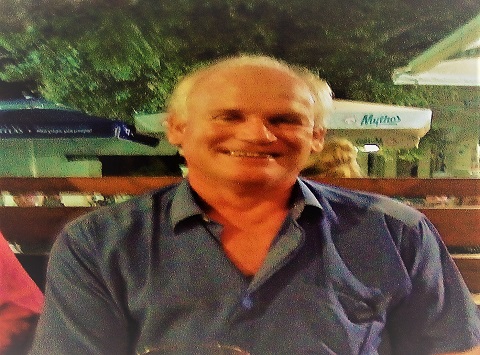
Victor Law
School of Mechanical and Materials Engineering, University College Dublin - Ireland
Victor John Law was born in London, U.K., on August 1, 1957. He received his BSc. degree from The Open University, Milton Keynes, U.K. in 1985 while he was with the Cavendish Laboratory Semiconductor Physics Group, University of Cambridge, Cambridge, U.K. Between 1999 and 2003, he was Senior Research Fellow with University College London, London, U.K. He obtained a Ph.D. degree (by published works) from the University of Ulster, Belfast, Northern Ireland, in 2005 whist holding the position of Senior Research Fellow with Dublin City University, Dublin, Ireland (2003-2011). Since 2012, he has held the post of Senior Research Engineer with the Surface Engineering Group, University College Dublin (UCD) - Ireland. He has authored over 160 publications, including 105 peer-reviewed scientific papers and is the holder of three patents. His research interests include plasma drive circuits and complex interactions between plasma and surfaces. He is now retired to the island of Crete - Greece where he continues to contribute to UCD research effort.
The microwave plasma drilling as well as cutting of materials using an open-end transmission-line within a single-mode applicator was first patented 2000 [1]). Latter followed by the use of a transmission-line electrode design within a multimode cavity [2] and within converted domestic microwave ovens [3]. One of the by-products of these drilling and cutting systems is the formation of nanomaterials [4]. In 2018, the dielectric volume heating of grapes and tomatoes within a multi-mode cavity reactor were investigated [5], and more recently (2019) dielectric volume heating of basalt has also produced reaction by-products material in the 0.15 micron to 0.2 millimetre range [6]. This paper reviews the use of microwave generation of plasmas for the production of nanostructure (grain size of < 100 nm, in at least one dimension) rather than the original drilling idea. This is because most nanomaterials have high-value derived from their unique combination of chemical and physical properties (i.e., thermal and electrical conductivity, high mechanical strength, and optical properties) that have applications both in electronics and biomedical engineering sector. The microwave discharges used to generate the particles can be formed using a range of electrode arrangements, including the transmission-line arrangement within a single-mode or multimode cavity, or simply using volume heating within a multimode cavity, the basic principle of dielectric volume heating producing a molten zone in the irradiated material where upon the material is heated to a ionized state that results in the ejected a plasmoid [7] followed by the production of a self-sustaining dusty-plasma or ‘fireball’ with lifetimes of 0.03s [8, 9]. Ultimately, particles coalesce out under gravity and form at the bottom of the cavity for collection.
Key words: microwave oven, open end transmission-line, plasmoids, dusty-plasma, fireball, metal and organic nanostructures.
Scientific Session Speaker
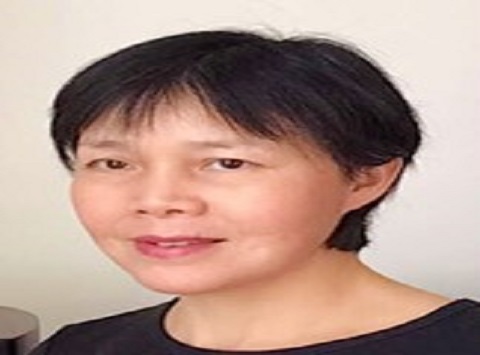
Tingshu Hua
Department of Electrical and Computer Engineering, University of Massachusetts Lowell, USA
Dr. Tingshu Hu received her B.S. and M.S. degrees in electrical engineering from Shanghai Jiao Tong University, Shanghai, China, in 1985 and 1988, respectively, and the Ph.D. degree in electrical engineering from the University of Virginia, Charlottesville, VA, USA, in 2001. She was a Postdoctoral Researcher with the University of Virginia and the University of California, Santa Barbara, USA. In January 2005, she joined the Faculty of Electrical and Computer Engineering, University of Massachusetts Lowell, Lowell, MA, USA, where she is currently a Professor. Her research interests include nonlinear systems theory, optimization, robust control theory, battery modeling and evaluation, control applications in power electronics and power management systems for nanogenerators
This study presents a simple and effective power management circuit for triboelectric nanogenerators (TENGs) with the TENG as the only power source. TENG was developed for the objective to provide power to electronic devices and sensors without the need for a battery (the so-called self-powered systems). A unique feature of the TENG’s electrical output is high pulsed voltage but low current capability, making TENGs unsuitable for direct use as a power source. To provide continuous and steady electrical voltage for conventional electronics, a power management system (PMS) is required. Existing PMS’ based on power electronic converters do not provide a complete solution due to the use of additional power sources for the logic circuit and switch drivers. The PMS to be presented in this work provides a complete solution for a self-powered system with the TENG as the only power source. This goal is accomplished with a novel approach of employing discrete semiconductor devices, including a silicon-controlled rectifier (SCR) and zener diodes, for controlling the power flow paths, without using any integrated circuit. The effectiveness of the newly developed PMS has been experimentally validated with a prototype and a contact and separation mode TENG device.
Scientific Session Speaker
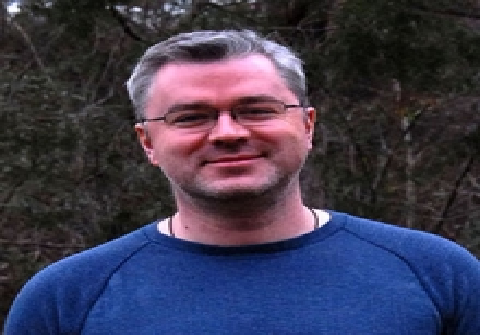
Kirill A. Afonin
Associate Professor, University of North Carolina, USA
Nucleic acids, including both DNA and RNA, are natural biopolymers which offer a biocompatible and programmable therapeutic approach. Beyond its traditionally known roles as a carrier and regulator of genetic information, RNA has emerged as a building material for versatile biological drugs, called therapeutic nucleic acids, which can take advantage of cellular pathways for the sensing, targeting, and silencing of various diseases. Today, I will discuss how RNA nanoparticles can be used to communicate with our immune system and conditionally activate the response
Scientific Session Speaker

Swetha Chandrasekaran
staff scientist Lawrence Livermore national laboratory USA
Dr. Chandrasekaran is currently employed as a research scientist at Materials science division of Lawrence Livermore National Laboratory (LLNL). Her research has focused on additively manufacturing (AM) carbon aerogel electrodes with varied physical properties, as well as on developing functional materials as AM-feedstocks for various projects at LLNL. Prior to joining LLNL, Dr. Chandrasekaran received her Ph.D. from Technische Universität Hamburg-Harburg, Germany in 2014 for her work on development of nano-particle modified polymer matrices for improved fibre reinforced composites.
Energy related processes, such as energy storage, catalysis, and desalination typically utilize high surface area electrodes that possess macro- and micropores. One such class of electrode materials are carbon-based aerogels - porous solids with an interconnected network of carbon nanoparticles that exhibit large surface area, high electrical conductivity, and good structural stability. However, the random nature of the pore network in these aerogel materials limits transport of species (e.g. ions, fluids, etc.) through the highly tortuous pore structure. Therefore, the ability to fabricate aerogels with controlled pore sizes and geometries aimed at facilitating species transport should lead to some tangible improvements in the performance and efficiency of carbon aerogel-based electrodes. Our work focuses on 3D printing these aerogels via direct ink writing to precisely deposit inks in a pre-defined tool path to form 3D structures to improve both mass transport and output power efficiency for electro-chemical applications. Developing a feedstock ink composition and tuning their rheological behavior is a key step to forming self-supporting filaments and thereby generate 3D parts. Electrodes with dimension varying from 10’s of mm to cm were printed with the smallest feature size of 100 microns. The 3D printed graphene aerogels can also be used as a scaffold to We have also demonstrated that by using 3D printed graphene aerogels as scaffold, to support ultrahigh mass loadings of pseudocapacitive materials.
Funding was provided by Lawrence Livermore National Laboratory Directed Research and Development Grant 16-ERD-051. This work was performed under the auspices of the U.S. Department of Energy by LLNL under contract DE-AC52-07NA27344.
Scientific Session Speaker
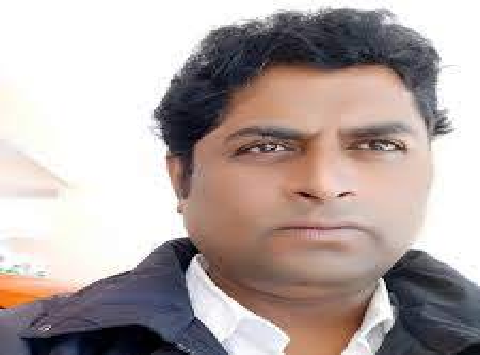
Gurumurthy.B.Ramaiah
Associate Professor, FTVET Institute/University - Ethiopia
Dr. Gurumurthy Bangalore Ramaiah is presently a Associate Professor in Textile Technology and Foreign Technical Expert at FTVET Institute/University, Addis Ababa, Ethiopia. He has a Ph.D in Textile Technology under Faculty of Technology from Visveswaraya Technological University, Belgaum, Karnataka..He has served 15 years in reputed Educational Institutions like CSIRIndia, IIT-Delhi, NIT-Jalandhar,Lovely Professional University and VFSTR (Deemed to be University) in India and helped students and faculty to attain their objectives in teaching,learning,evaluation,academics and research.. His research interests include, Functional textiles, Application of phase change material, IOT,ANN and Nano-materials on Defense Textiles.
This research approach basically focusses on application of Nano-materials on Textile Substrates and analysis of its technical properties, which is the basic requirement for protective textile application. However, in case of ballistic applications, anti-ballistic finish is a primary requirement and subsequently the development of the shear thickening fluid and its application is going to enhance the anti-ballistic property of protective textiles. Due to the above reason there is a need to develop an anti-ballistic finish to overcome technical issues related to application of shear thickening fluids and hence optimize the properties of protective textiles. In ballistic fabrics, functional properties of materials always pose challenge to professionals involved in design and development of anti-ballistic finish used in defense applications. In this research work a detailed analysis is presented on the design, development and application of nano-materials for Textiles,
Scientific Session Speaker
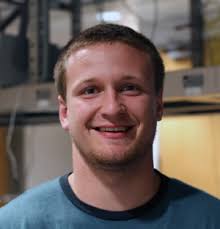
Peter D. Dahlberg
Postdoctoral Scholar, Stanford University, USA
Dr. Peter Dahlberg obtained his BSc (physics) from Mcgill University and his PhD (biophysics) at the University of Chicago under the advisement of Professor Greg Engel and Dr. David Tiede. His PhD research was focused on the development of ultrafast spectroscopy techniques to enable the observation of energy transfer events in photosynthetic systems. He is currently a postdoctoral scholar in the lab of W. E. Moerner at Stanford University. His postdoctoral work has concentrated on the correlation of light and electron microscopy at the single-particle level both through the use of super-resolution microscopy and single-molecule spectroscopy.
Cryogenic single-particle photoluminescence (PL) spectroscopy has been used with great success to directly observe the heterogeneous photophysical states present in a population of luminescent particles. Cryogenic electron tomography (CET) provides complementary nanometer scale structural information to PL spectroscopy, but the two techniques have not been correlated due to technical challenges. I will present our method for correlating single-particle information from these two powerful microscopy modalities and I will discuss our proof-of-principle demonstration in which we simultaneously observed PL brightness, emission spectrum, and in-plane excitation dipole orientation of CdSSe/ZnS quantum dots suspended in vitreous ice. Following these detailed spectroscopy measurements, the same quantum dots were identified in CET and resolved to the nanometer scale. Our PL spectroscopy in the amorphous ice host revealed a surprising splitting of the PL spectrum into two bands with an average energy separation of 80 meV. In some cases, the onset of the splitting corresponded to changes in the in-plane excitation dipole orientation. These dynamics were assigned to structures of individual quantum dots and the excitation dipoles were visualized in the context of structural features.
Scientific Session Speaker
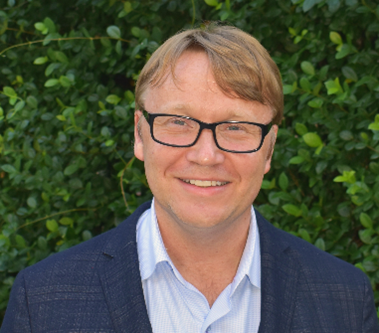
Peter Boul
Aramco Americas – Aramco Research Center - Houston, USA
Peter J. Boul received his Ph.D. in chemistry from Rice University in 2002. From 2002-2004 he was a Chateaubriand Postdoctoral Fellow at the Institut de Science et d'Ingénierie Supramoléculaires in Strasbourg, France. Following a fellowship at the University of Texas at Austin, he took a position at NASA (Johnson Space Center) in research and development with a focus on nanocomposites. He is currently a senior researcher at the Aramco Research Center (Aramco Services Company) in Houston where his work involves the development of advanced materials for the construction of oil and gas wells.
Research in nanomaterials has brought many performance enhancements to the materials used in oil and gas well drilling, cementing, production and enhanced oil recovery. While the products of these investigations and product development processes vary widely in terms of technology readiness, improvements in performances with nanoparticles are being witnessed in the field at this current time. Step-change innovation in the industry through advances in nanomaterials is anticipated to find a strong footing in the development of smart self-sensing cements, production technologies, enhanced oil-recovery technologies, nanoparticle sensors, sensor networks, and downhole power and automation. This webinar provides a brief overview of the applications of nanoparticles as they relate to upstream oil and gas and evaluates where the current state-of-the-art is in high performance oil well construction, production enhancement and reservoir management materials.
Scientific Session Speaker
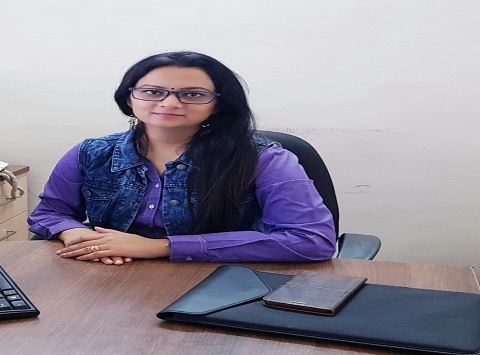
Jiban Jyothi Panda
Scientist, Institute of Nano Science and Technology, India
Effective treatment of CNS diseases including brain tumors, HIV and other neurodegenerative diseases has long been hampered by the inability of many drug molecules to cross the blood brain barrier (BBB). Highly restrictive tight junctions between the brain capillary endothelial cells are mainly responsible for the barrier properties and limit the transfer of almost all drugs from blood to brain. Recent strategies enhance the capacity of therapeutic molecules to cross the BBB by modifying the drug itself, or by coupling it to a vector for receptor or adsorption-mediated transcytosis. Our goal in the present work is to explore the ability of peptide based nanostructures for safe and effective delivery of drugs across the BBB for theranostic applications. Stimuli responsive nanocarriers for cancer specific delivery are also being developed. These nanostructures owing to their ease of synthesis and high biocompatibility will act as excellent carriers that selectively and aggressively target the CNS. Nanotheranostic systems for Alzheimer’s disease has also been explored.
Scientific Session Speaker
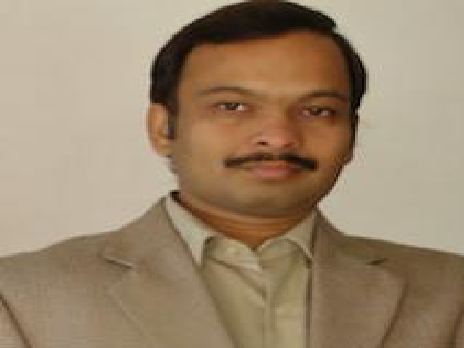
Dinesh Singh
Universidad de Santiago de Chile, CHILE
The wonder material known as graphene1, due to its astounding properties such as very high theoretical surface area, excellent thermal conductivity, superior mechanical properties, and ultra-high electron mobility have led it to explore its widespread applications in electronics, optics, biomedicine, energy conversion and storage. Among various applications supercapacitor have drawn considerable attention due to its fast charging, instant power delivery and ability to sustain thousands of charge-discharge cycles at higher current densities for utilization as an energy storage device for the renewable and sustainable energy storage to provide continuous power supply 24 hrs. Supercapacitors, store opposite charges at the interface of active layer/electrolyte only by physisorption, and their fast ion-exchange kinetics makes them specifically appealing to be used in high power applications such as hybrid electrical vehicles and power stations. Graphene being one atomic thick and having very high surface area is the most suitable candidate for the efficient energy storage and low cost of production is another benefit for large scale commercialization. Here we present the variety of graphene-based structures/composites and their applications as a high-performance supercapacitor. Various metals and transition metal oxides (such as Au, titanium dioxides, cobalt oxides and Nickel encapsulated CNT etc. as shown in Figure below) composites with graphene are synthesized by hydrothermal/microwave methods and their potential applications as a supercapacitor will be discussed and described.
Scientific Session Speaker
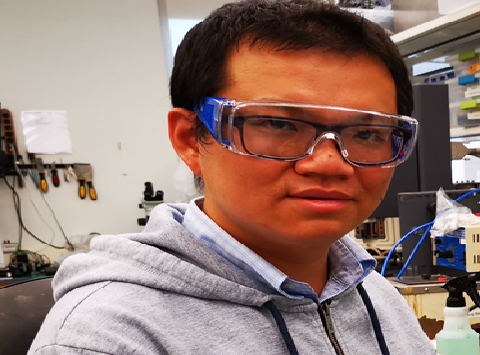
Vi Khanh Truong
Nanobiotechnology Lab, School of Science, College of Science, Engineering and Health, RMIT, Australia
Vi Khanh Truong is an RMIT Vice Chancellor's Postdoctoral Research Fellow and Fulbright Scholar. Dr. Truong obtained his Ph.D. in Nanobiotechnology in 2012 from Swinburne University of Technology, Australia. He held postdoctoral industrial positions with the CRC for Polymers and the ARC Steel Research Hub where he has designed innovative antimicrobial coatings. In his current research, he further investigates the interactions between microbial cellular structures and nanomaterials to understand “antimicrobial resistance” and develop “next‐generation antimicrobial strategies”.
Antimicrobial resistance has led the biofilm-related infection more difficult to treat. It is important to design the treatment which can not only break down biofilm but also destruct the microbial cells. Stimuli-responsive therapies represent an alternative technological focus due to their capability of delivering targeted treatment on-demand. Low toxicity gallium-based liquid metal (LM) may be the answer for the new antimicrobial strategy. Magnetic particles such as Fe were encased into LM, then under the sonication, the LM droplets with Fe core were formed in the aqueous environment. Under the rotating magnets, these magnetic LM droplets turned into more complex shapes surrounded by atomic sharp edges of GaOOH (oxidized gallium). These particles with sharp edges were able to move towards the biofilm; and not only shred their matrix but also cut through the bacterial cell membranes. Combining with the unique property of liquid metal and magnetic-responsive iron cores allow us to design the next-generation shape-transformable particles which can be used to treat a wide range of biofilm-related infections.